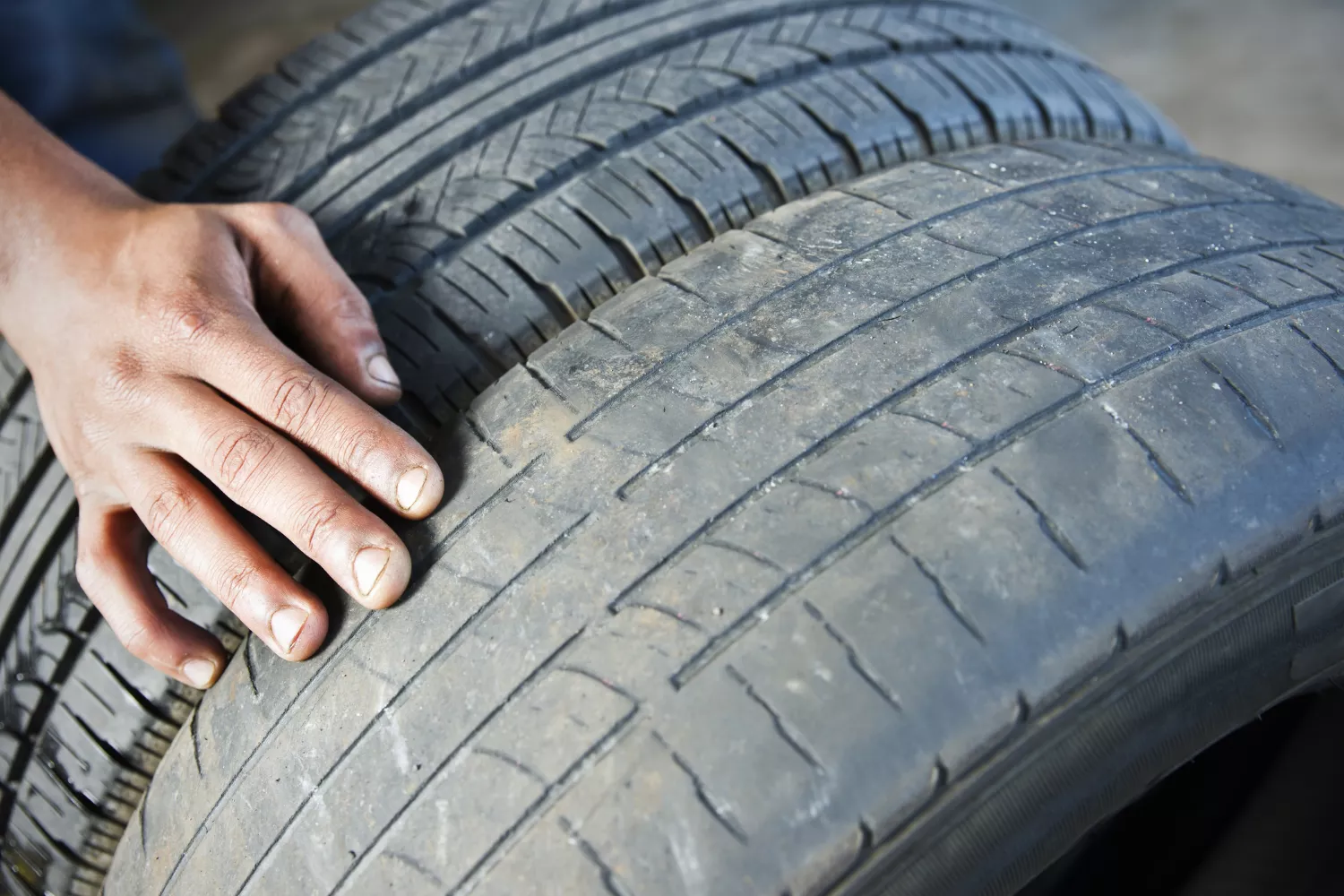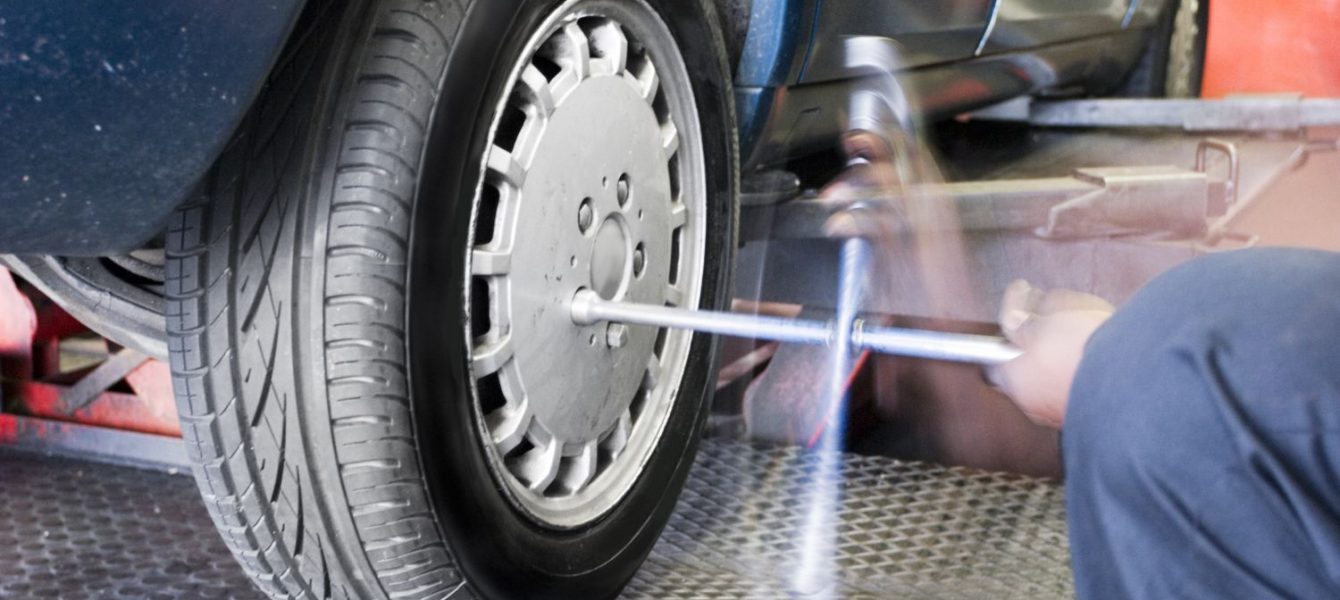A new set of tires may last anywhere from 10,000 miles to over 50,000 miles, but this depends on several factors, such as vehicle type, driving style, tire type, vehicle condition, and tire maintenance. Sportscar tires, aggressive driving, winter tires, poor suspension alignment, or lack of tire maintenance can reduce tire lifespan so its important to manage it with professional tire services. On the other hand, commuter tires, responsible driving, low-rolling-resistance tires, a good suspension alignment, and regular tire maintenance can extend the life of your tires.
Vehicle and tire maintenance is especially critical to tire lifespan. Worn suspension components, such as ball joints, bushings, or shocks and struts, can lead to abnormal tire wear. Incorrect tire pressure, either too high or too low, can accelerate wear, as well as can an out-of-alignment suspension. Tire rotation can also improve tire life, but how?
Why Should You Rotate Tires?

Tires experience different forces, depending on where they are mounted, leading to different wear patterns. The front tires on front-engine vehicles carry more weight than those mounted in the rear, and front-wheel drive adds even more weight to the front tires. Additionally, front tires account for about 80% of braking forces – even more, “weight.” Finally, the front tires also turn the vehicle. The result of these disproportionate forces is that the front tires tend to wear out faster and in different ways than the rear tires.
Rotating tires distributes these different types of wear across more than one tire. For example, rear tires tend to wear flat, while front tires tend to wear the shoulders. Swapping these tires front-to-rear and vice-versa gives the “rear” tire a chance to wear the shoulders and the “front” tire a chance to wear the center. This extends the life of the set of tires and reduces the chance of abnormal tire wear, causing noises and vibrations.
Given a new set of tires, one could simply replace the front tires when worn, maybe twice as often as rear tires, or rotate tires and help the whole set last longer. Economically-speaking, not rotating tires could mean the difference between buying six tires, by the time the rears are fully worn, instead of only four tires, with regular tire rotations.
As most modern automobiles have oil change interval recommendations of 5,000 to 7,500 miles, this is a good time to rotate tires, because your vehicle is already in the shop and in the air. Adding a tire rotation doesn’t add much to the visit. Tire manufacturers recommend tire rotations every six months or 5,000 to 8,000 miles, although this can vary, depending on vehicle and tires requirements.
Generally, a tire rotation refers to moving the rear tires to the front, keeping them on the same side, and moving the front tires to the rear, switching sides. In other words, the left-rear (LR) tire goes to the left-front (LF) position and the right-rear (RR) tire goes to the right-front (RF) position. LF crosses to the RR, and RF crosses to the LR.
There are cases when you can’t follow this standard pattern, however. Directional wheels or directional tires stay on their own sides, so LF ↔ LR and RF ↔ RR. Depending on how you rotate dually-rears, maybe the only available option is rotating left to right, so LF ↔ RF and LR ↔ RR. Finally, vehicles with different-size tires and wheels, such as some sports cars, may be limited to the left-right rotation, if at all. In all cases, check your owner’s manual or with your tire retailer to be sure.
How Do You Rotate Tires?
If you know how to change a flat tire, then you know how to rotate tires, and you likely have all the right tools already. You’ll need a tire crayon or a post-it note, jack and jack stands, lug nut wrench or impact wrench, and a torque wrench.
- Park the vehicle on the level surface, set the parking brake, and chock the wheels.
- Go around and mark the tires with their new positions. Following the standard tire rotation procedure, you’d park the LR tire LF, RR tire RF, LF tire RR, and RF tire LR, or follow whatever is necessary for your vehicle and tire configuration.
- Jack up the vehicle and support it on jack stands. Never put any part of your body under a vehicle supported only by the jack.
- Remove the lug nuts for each wheel and move each wheel to its new position.
- Mount the wheels in their new positions, tightening the lug nuts finger-tight.
- Lower the vehicle to the ground, then use a torque wrench to tighten each lug nut to the proper specification and sequence. Check your owner’s manual for the specific torque reading.
- Check and adjust tire pressure to the reading in the owner’s manual or that specified by the Tire & Loading sticker on the driver’s door jamb.
The next time you get new tires, your tire installer may suggest a suspension alignment, which is a good idea to prevent abnormal tire wear. Still, don’t forget ongoing tire maintenance to help your tires last longer, including regular suspension inspections, proper tire pressure, and regular tire rotations. Rotate your tires, and they’ll last longer, perform better, and deliver a quieter ride, saving both your sanity and your wallet.



Leave a Reply